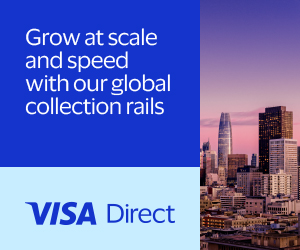The proof is in the numbers. Road freight currently produces significant global emissions, and businesses are actively working to lower these numbers. Their focus is specific: reduce emissions by 20% before 2030 to help reach zero emissions targets.
What Is Sustainable Distribution?
Sustainable distribution refers to the transportation, storage, and delivery of goods in a way that has the least possible harmful effect on our communities and the environment. This practice covers everything from transportation and warehousing to packaging and reverse logistics.
Companies employ several important strategies to ensure sustainable distribution. Transportation routes are optimized, and low-emission vehicles are used. Their warehouses are run by renewable energy sources and are energy efficient. To cut down on waste, they choose recyclable packaging materials. Finally, standards like SA8000 ensure fair labour practices throughout supply chains. This standard creates better working conditions and reduces negative impacts on local communities, such as noise pollution from transportation activities.
The Importance of Sustainable Distribution
Road freight accounts for a significant portion of global greenhouse gas emissions. Scientists have determined that reaching the objective of zero emissions requires a 20% reduction in road freight emissions by 2030. This target aligns with the Paris Agreement's goal of reducing energy-related carbon dioxide emissions by 45% by 2030, which aims to limit global temperature rise to 1.5 degrees Celsius. Implementing sustainable distribution practices is one of the most crucial strategies for reducing the transportation sector's carbon footprint.
Moreover, sustainable distribution offers clear financial benefits. Companies spend less on fuel when they plan better routes. They pay less for waste disposal when they use smarter packaging. When resource prices go up and down, sustainable companies handle these changes better because they use fewer resources in the first place.
Best Practices for Sustainable Distribution
Statistical data indicates that sustainable distribution practices provide substantial financial and environmental advantages. Companies that implement these practices report substantial operational efficiency enhancements while decreasing their carbon footprint.
Efficient Transportation and Delivery Systems
Transportation stands as the biggest opportunity for reducing environmental impact in distribution. Advanced routing software now does what teams of planners once handled manually—finding the quickest, most fuel-efficient delivery paths. A good example comes from Amazon, which cut its outbound packaging by 33% simply by filling trucks more efficiently based on software recommendations.
Companies like UPS demonstrate what's possible with electric vehicles. Their commitment to add 10,000 electric delivery vehicles by 2025 shows how traditional delivery fleets can switch to cleaner alternatives. Alternative fuels like biofuel and hydrogen also play a role; experts project these cleaner energy sources could slash the industry's carbon output by 40 to 50% within the next five years.
Sustainable Packaging Solutions
Packaging creates a significant environmental burden; the EPA found it accounts for 28.1% of all municipal waste in the U.S. However, smart companies have found ways to package products that protect both items and the environment. The key lies in knowing the exact amount of material needed—no more and no less. Companies taking this approach have cut their packaging waste in half.
Reusable containers might cost more upfront but save money over time. Think of it like switching from disposable coffee cups to a reusable mug—the initial cost pays off through repeated use. Distribution centers using sturdy, reusable shipping containers report both cost savings and reduced waste.
Energy Efficiency in Warehousing
Modern warehouses use smart systems to track and adjust their energy use automatically. These systems spot and fix wasteful patterns—much like a smart home thermostat but on an industrial scale. The savings add up quickly, with facilities cutting their energy bills by up to 20%.
Lighting makes a bigger difference than many realise. LED systems use 75% less power than older lights, and adding motion sensors ensures lights only run when needed. Similarly, modern HVAC systems adjust their output based on actual warehouse activity rather than running at full power all day.
Sustainable Last Mile Delivery Strategies
The final stretch of delivery, from local warehouse to customer, offers unique opportunities for sustainability. Data by Accenture shows that placing fulfilment centres closer to customers could lower last-mile emissions by 17–26% by 2025. This works because shorter delivery routes mean less fuel used per package.
Electric delivery vans work particularly well for these shorter routes. Companies like EcoFuel.ie, have proven that electric vehicles combined with smart routing can handle local deliveries efficiently while producing zero emissions. The shorter distances and frequent stops in city deliveries actually play to the strengths of electric vehicles.
Better data analysis helps prevent wasted trips—a major source of unnecessary emissions. By understanding delivery patterns, companies can group deliveries more efficiently and reduce the number of failed delivery attempts. This means fewer vehicles on the road and lower fuel consumption.
Benefits of Sustainable Distribution
Sustainable distribution gets real results for businesses while protecting the environment. Companies report significant gains in efficiency, cost savings, and customer satisfaction. Here's what the data shows:
|
Category |
Benefit |
Industry Impact |
|
Environmental Benefits |
Greenhouse Gas Reduction |
Green freight initiatives cut CO2 emissions by up to 30%, according to the International Council on Clean Transportation. This helps companies stay ahead of environmental regulations while supporting global climate goals. |
|
Waste Minimization |
Smart route planning and better packaging reduce landfill waste substantially. The EPA found that packaging materials make up 28.1% of U.S. municipal solid waste. Companies now use right-sized packaging to address this issue. |
|
|
Resource Conservation |
Using renewable energy in warehouses and choosing packaging materials makes a big difference. Companies save money on utilities while reducing their environmental impact. |
|
|
Economic Advantages |
Cost Savings |
McKinsey reports that energy-efficient supply chains cut operational costs by up to 20%. Companies spend less on fuel and electricity while getting more work done. |
|
Operational Efficiency |
Better route planning means faster deliveries and less fuel wasted. Drivers complete more deliveries in less time, which makes customers happier. |
|
|
Competitive Advantage |
More logistics contracts now require emissions data. Companies with lower emissions win more business, giving sustainable operations a clear market advantage. |
|
|
Customer Loyalty & Brand Image |
Consumer Preference |
Nielsen found that 73% of consumers would change their buying habits to help the environment. Companies that show real environmental progress gain loyal customers. |
|
Brand Perception |
Customers notice and respond positively when businesses prove their commitment to sustainability through actions rather than words. |
|
|
Risk Management |
Regulatory Compliance |
Environmental rules keep getting stricter. Sustainable practices help companies stay compliant and avoid costly fines. |
|
Reputation Protection |
Companies that actively reduce waste and emissions build customer trust and protect their brand reputation. |
Green freight programs cut emissions by 30%, and energy-efficient supply chains reduced costs by 20%. These numbers support what industry leaders already know: sustainability drives both profit and progress.
The Future of Sustainable Distribution
A number of important developments indicate that sustainable distribution is about to undergo some major changes moving forward:
- Artificial Intelligence (AI) and Automation
AI technology now handles complex distribution tasks that used to require rooms full of people. Software spots delivery patterns and suggests faster routes automatically. It predicts when machines need maintenance before breaking down, saving time and resources.
- Blockchain for Transparency
Blockchain systems track products from factory to customer with perfect accuracy. This means companies can prove their products' origins and how they got there. Customers who care about buying responsibly can see the whole story of their purchase.
- Reusage and Recycling
The old "use once and throw away" approach no longer works. Companies now design packaging to be used multiple times or recycled completely. Some businesses even collect their packaging from customers to use again, cutting costs and helping the planet simultaneously.
- Partnerships Across Sectors
Different companies working together achieve more than they could alone. Shipping companies share warehouse space to reduce empty trips. Manufacturers team up to transport goods together instead of running separate, half-empty trucks. These partnerships make the whole system work better.
Weitnauer's Approach to Sustainable Distribution
Weitnauer Group prioritizes environmental responsibility in all business decisions. Our ESG framework guides our operations, from choosing suppliers to delivering products. The results show in our numbers: 40% of our distributed products use recycled materials, including glass bottles for fragrances and skincare items.
We take clear steps to reduce our carbon output by choosing ships over planes whenever possible. Our involvement in Smoke-Free Future programs and focus on reduced-risk products shows our commitment to both environmental and social responsibility. These practical choices add up to real progress toward our sustainability goals.







































